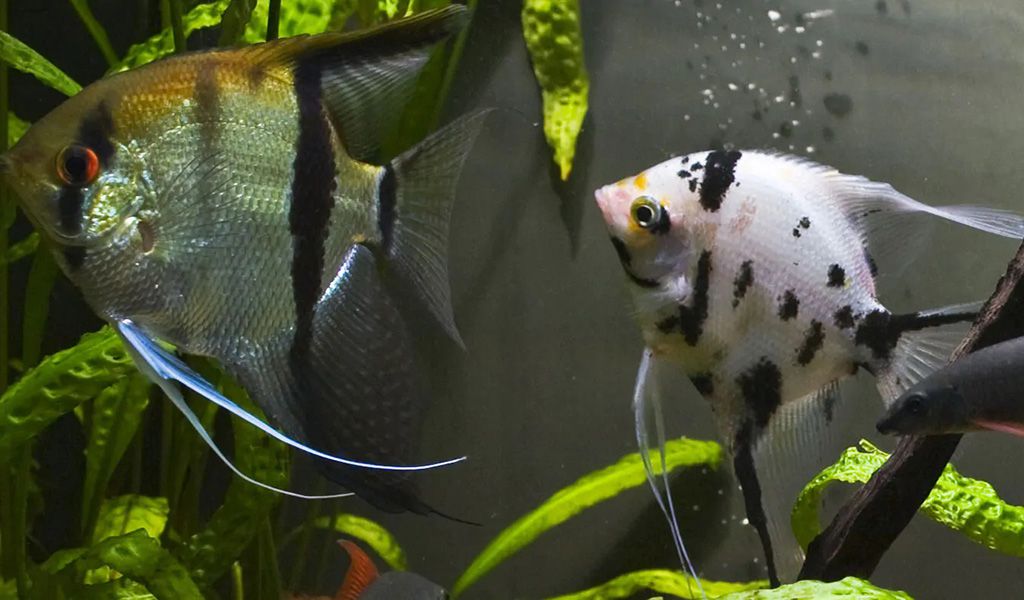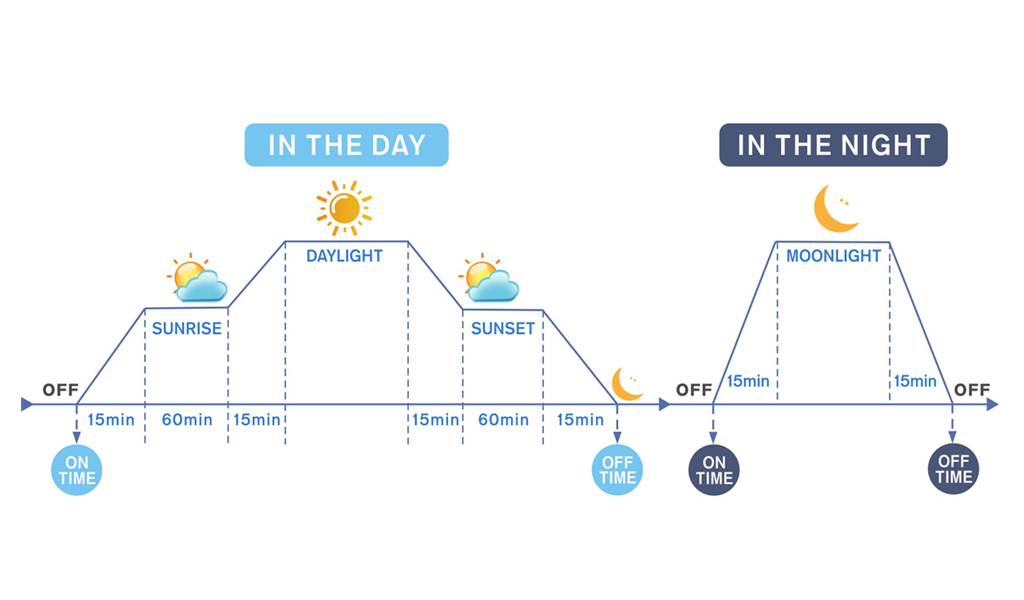Setting the Properly Aquarium Lighting Intensity
It is reported that not only the lighting hours bring an impact on your aquarium, but also the light intensity. Only when the light intensity meets the demands of photosynthesis, the aquatic plants can better make sense in your tank. Meanwhile, adjusting light intensity can limit the growth of plants. Besides, the light intensity also affects the color and growth of fish. Today, let’s learn more about aquarium light intensity!
Content Table
What is light intensity?
Light intensity, abbreviated as illuminance or illumination, refers to the brightness of the light. It is the rate at which the surface received energy from the light. Also, it means the luminous flux of visible light per unit area. And its unit is lux or lx. If the luminous flux on one square meter is 1 lumen, then its illuminance is 1 lux.
Be clear of the units of illuminance (light intensity) and luminous flux:
| Items | Unit |
| illuminance (light intensity) | Lux/lx |
| luminous flux | Lumen/lm |
The intensity of the light formula
In this segment, we will discuss the ideal light intensity in different types of aquariums. One tip in advance, the light intensity will change with various water depths – the deeper the water, the dimmer the light intensity. We are likely, to begin with, planted aquariums. The light intensity should meet the requirement of photosynthesis and metabolism. In general, light intensity below 100 lux is not good for aquatic plants. However, it depends. Take cryptocoryne costata as an example, it can survive at 50 lux. By the way, for more details about light settings for aquarium low-light plants, please go for Light Settings for Aquarium Low-light Plants.
For fish-only tanks, you can set the light intensity according to your preference, seeing that it is no need to meet the demands of aquatic plants. However, 10-20 lumens per gallon or 1-2 watts per gallon is ideal. Aside from that, reef aquariums may require higher light intensity, 4-8 watts per gallon may be an excellent option.

We know that different aquariums require different light intensities. However, how does the light intensity bring effects to your aquarium? Here we should know one word – circadian cycle. Not only humans, but fish also follow the circadian cycle. The cycle tells them when to eat or rest. And the light intensities during sunrise and sunset are different. As for many fish, they need rest at night. So you should decrease the light intensity at night or turn off the light. Furthermore, too much light will accelerate the thriving of algae, which may be bad for your tank.
As for aquatic plants, they need enough light intensity to photosynthesize. Without photosynthesis, your plants can not get the necessary nutrients to grow, as well as produce oxygen for your tank. The aquatic plants’ leaves will gradually turn yellow and even decayed. In the end, most plants are probably suffering death. In a word, ideal light intensity is critically crucial for your tank.
How does light intensity affect the rate of photosynthesis?
Factors, including light intensity, temperature, and carbon dioxide concentration, will affect the rate of photosynthesis. Nonetheless, although there are suitable levels of temperature and carbon dioxide, photosynthesis still can not be fast as lacking light intensity. As for planted tanks, higher light intensity brings more light to the leaves. When you adjust the light intensity from dim to intense, the rate of photosynthesis will get improved, since more light is available to push the photosynthesis. Nevertheless, the rate of photosynthesis will keep stagnant once the light intensity gets optimal. The number of chlorophyll molecules will limit the rate. The light begins to damage your plants at an extremely high light intensity, then the rate will drop.
How do measure light intensity?
This part will give you a specific example of setting light intensity setting. Provided that you have an aquarium with 60 cm in length, 30 cm in width, and 40 cm in height. Then Hygger 957 aquarium light 36W is suitable. You can set the light intensity following the example:
| Time stages | Light intensity |
| L1: 6:30 am-6:45 am | 10%/20% |
| L2: 6:45 am-8:00 am | 30%/40%/50%/60% |
| L3: 8:00 am-17:00 pm | 70%/80%/90%100% |
| L4: 17:00 pm-18:15 pm | 30%/40%/50%/60% |
| L5: 18:15 pm-18:30 pm | 10%/20% |
| L6: 18:30 pm-18:45 pm | 30%/40%/50%/60% |
| L7: 18:45 pm-23:15 pm | 70%/80%/90%/100% |
| L8: 23:15 pm-23:30 pm | 50%/40%/30%/20%/10% |

Specific steps to set the light intensity? As soon as you set the DIY mode to ON, the display will show “L1”, and the number on the right will flash “10”. Then press the “Up” button to choose the brightness, 20% is OK. Next, we need to set the start and end times of the L1 stage.
- Setting the start time of the L1 stage
Press the “Setting” button, when the “Hour” on the left time box flashes, then press the “Up” and “Down” buttons to choose the “6”. Meanwhile, press the “Setting” button, when the “Minute” on the left time box flashes, then press the “Up” and “Down” buttons to choose the “30”.
- Setting the end time of the L1 stage
Press the “Setting” button, when the “Hour” on the right time box flashes, then press the “Up” and “Down” buttons to choose the “6”. The minute setting is the same as the steps mentioned above.
The programming steps from L2-L8 are the same as the L1 stage. Nonetheless, it is no need to set the start time on the left time box, because the left time box will read the end time of the last stage.
In addition to this, for more light programming steps, please read this article – How to Set a Light Timer with Hygger 957 Programmable Light.
Reminder
To choose a more suitable light for your aquarium, let’s have a look at the basic parameters of aquarium lights.
- Watts: The amount of energy.
- Kelvin: Color the temperature of your light. (Most aquariums need a kelvin rating of 5000-20000K.)
- PAR: The amount of light for photosynthesis.
- Lumen: The level of brightness.
After reading, we believe you have possessed a deeper understanding of aquarium light intensity. In summary, the requirements of various aquariums can be different. You should make decisions according to the types and size of your tank, as well as the fish, aquatic plants, and creatures in your aquarium. By the way, lighting time is also important. Generally speaking, 8-12 hours per day is great. Finally, thanks for your reading, and welcome to share your ideas in a comment!
